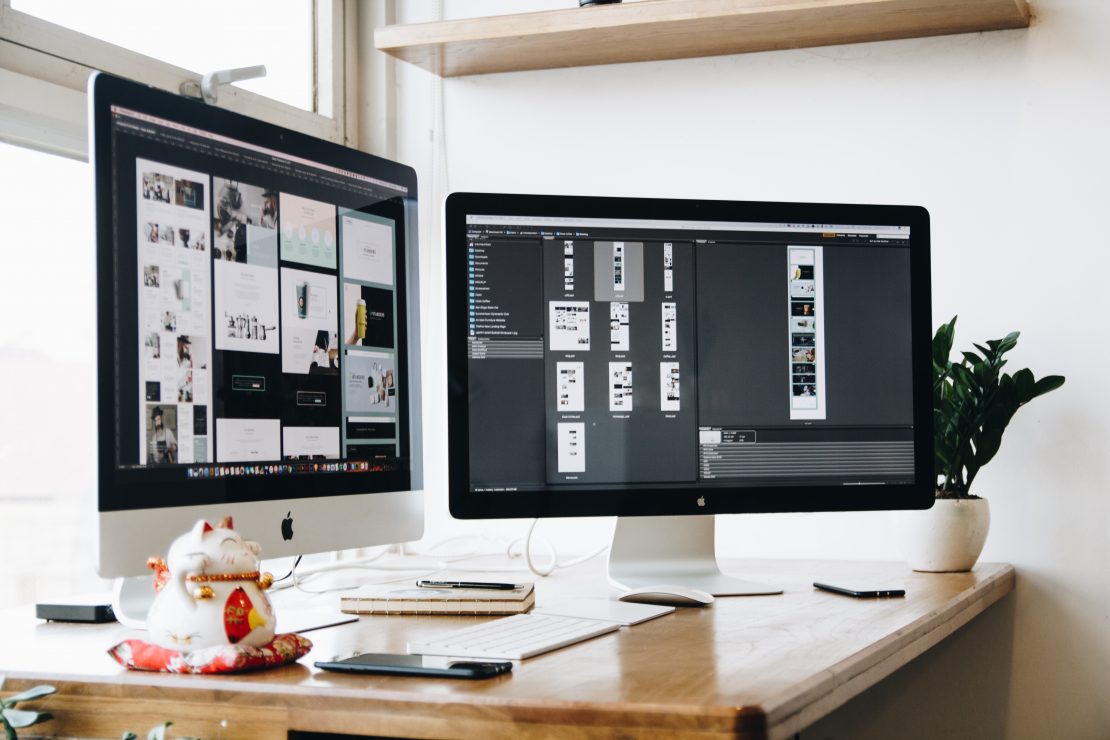When people think about editing images, usually, the first software they think of is Photoshop. It is more than likely because when people ask for edited images, they usually aren’t thinking about things like a logo. But there are a few good options to help you optimize your designs. What about Illustrator? They each play a unique and important role in the world of graphic design. Let’s break down Photoshop vs. Illustrator and when to use both in design.
So, creating a banner or logo, one may think that the best possible solution would be to hop onto Photoshop and create an image before exporting it as a JPEG. While the idea makes sense, in practice, it can actually be a bit of a nightmare. When creating something as versatile as a logo in Photoshop, it is vastly limiting the capabilities. For example, if I made a logo and sized it at five inches by five inches. It may seem perfect to shrink down for a letterhead or business card. But, if I ever want to have the logo blown up on a large scale like a billboard, then it may be pixelated and blurry. Why is this the case?
Photoshop
First thing’s first: Photoshop uses pixels. Whenever you take a picture of something, your camera is also using pixels to capture the image. Photoshop’s main purpose is to edit photographs or raster-based artwork. Photoshop works by enhancing the image’s hue, shading, and more so it looks more professional. It can also manipulate the image by adding objects to the image. The software then blends them to make the objects look like they would if in the original image or design. It then follows that up by adding finishing touches to images to help make it look more professional or artistic.
However, if you expand the image, here comes the problem. Pixels are fixed squares filled with color specific to your overall image. When this expansion past the initial width and height happens, it may look extremely blurry and choppy. This blurriness may happen because there are now holes where the pixels were supposed to be in the image, and now Photoshop is trying to fill in those holes with more pixels that are close to the colors surrounding it. It could work up to a specific width and height, but eventually, the image is going to end up looking blurry and muddled, and not at all what you wanted. That is why, for branding pieces like logos or flyers, we use Illustrator.
Illustrator
Illustrator is great for anything with text because it uses vectors. Vectors are points that create a smooth, straight line, so when you zoom into the image, you’ll see a straight line instead of small boxes, like if you used Photoshop. Images created in Illustrator are completely scalable. Whenever an image is scaled up and down, the software itself is solving an equation to calculate how big or small the line needs to be based on the input you are adding to the design. Thankfully, you don’t have to know the math behind vectors. You only have to know that it’s versatile and great for anything that needs to be either really big or really small. For this reason, Illustrator is best for logos.
When saving your logo, it’s best to get it in as many file versions as you can. And always make sure to save a PNG and PDF. PNG’s are great because they have no background color, so you can place your logo anywhere without having to worry about a white box encasing it. The drawback is that, if you blow it up, you will see the small squares because it uses pixels. This is why we have two formats. PDF’s use vectors. This is great for things like billboards. This file type extends the logo farther without having to worry about any blurriness. The best rule of thumb, though: If you can save your logo and keep your original Illustrator file, it would be better for everyone involved so, if you misplace any of the logos, you still have the original to re-save from.
Photoshop and Illustrator are both great tools, and each plays an important role in the world of design. If you have any questions or need help with your branding or logo designs, give us a call today! We’d love to help you.
